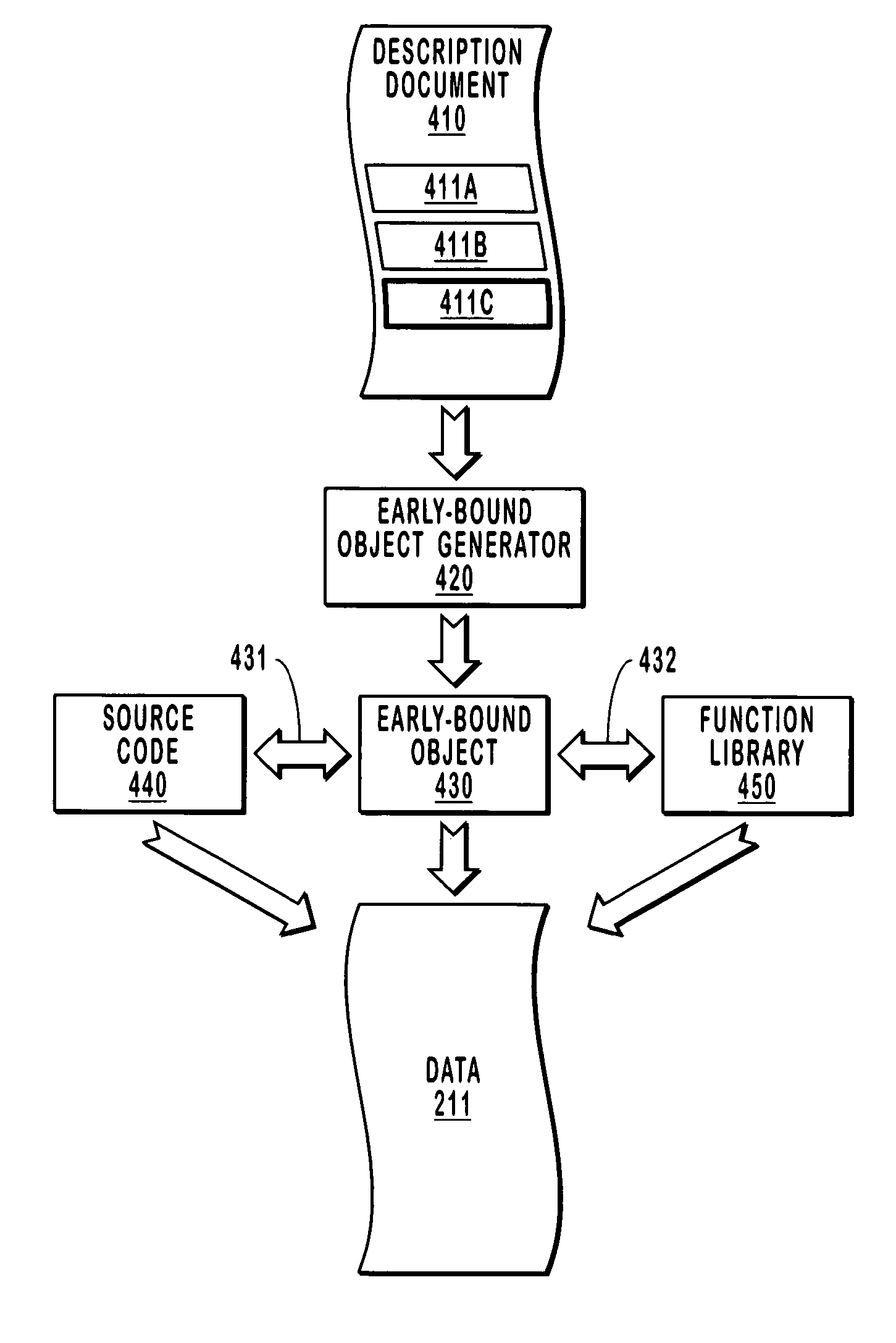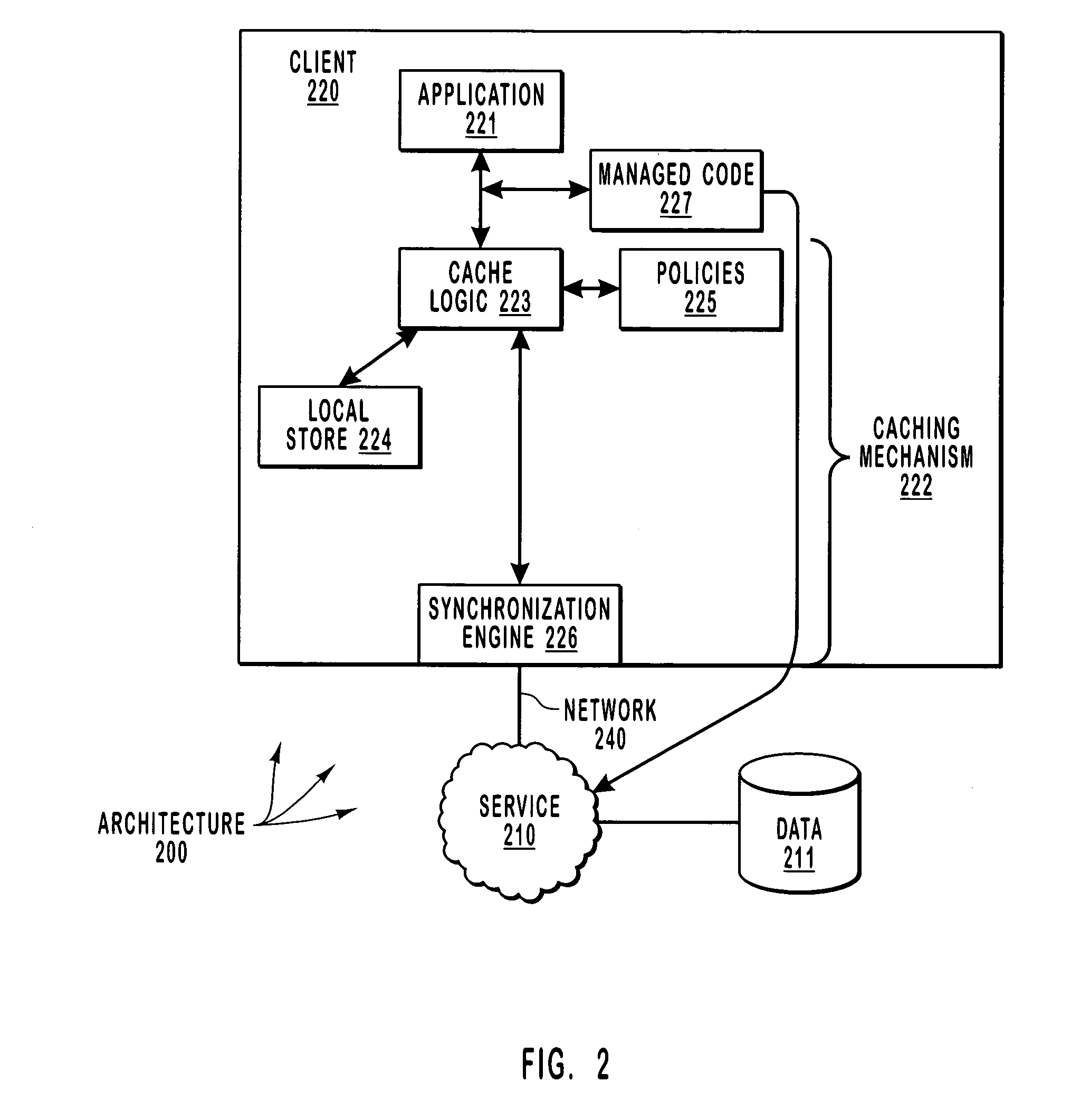Managing code when communicating using heirarchically-structured data
a technology of heirarchical structure and code, applied in the direction of version control, instruments, computing, etc., can solve the problems of needing to deal with the potentially cumbersome process of programming, the complexity of parsing responses, and the complexity of method calls
- Summary
- Abstract
- Description
- Claims
- Application Information
AI Technical Summary
Benefits of technology
Problems solved by technology
Method used
Image
Examples
Embodiment Construction
[0031] The principles of the present invention relate to mechanisms for allowing a programmer to draft source code that manipulates a hierarchically-structured document without requiring that the programmer draft source code that specifically references the structure of the hierarchically-structured document. Instead, a description of the hierarchically-structured document of the same class as the hierarchically-structured document is accessed and converted into one or more early-bound objects having at least some of the same properties as the hierarchically-structured document, and having at least some of the methods that may be performed on the hierarchically-structured document. These early-bound objects correspond to the structure of the XML document and know how to track changes to the document, consistent with the change-tracking rules associated with the document structure.
[0032] When a function call is placed to the early-bound object, the early-bound object causes the appr...
PUM
 Login to View More
Login to View More Abstract
Description
Claims
Application Information
 Login to View More
Login to View More - R&D
- Intellectual Property
- Life Sciences
- Materials
- Tech Scout
- Unparalleled Data Quality
- Higher Quality Content
- 60% Fewer Hallucinations
Browse by: Latest US Patents, China's latest patents, Technical Efficacy Thesaurus, Application Domain, Technology Topic, Popular Technical Reports.
© 2025 PatSnap. All rights reserved.Legal|Privacy policy|Modern Slavery Act Transparency Statement|Sitemap|About US| Contact US: help@patsnap.com



